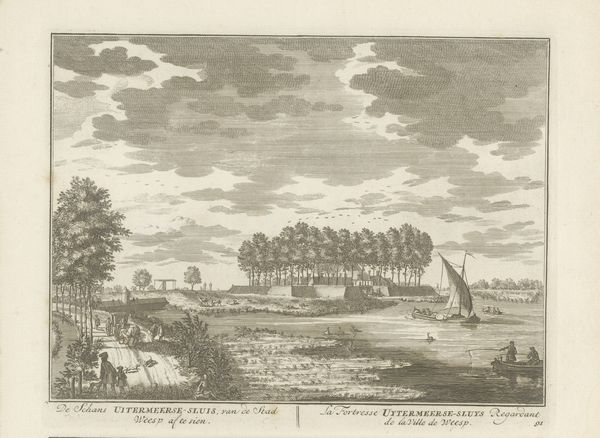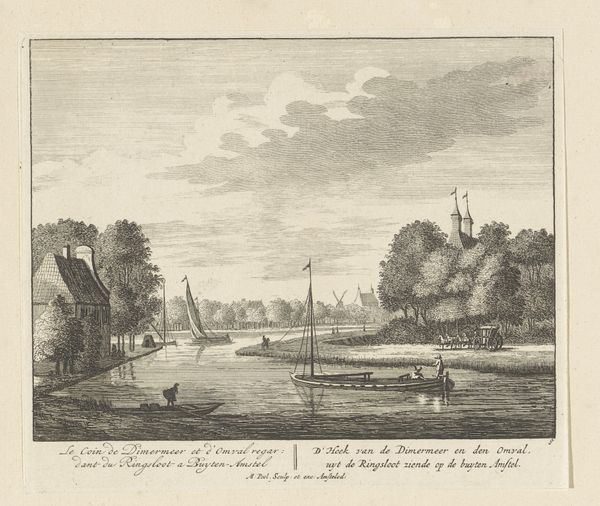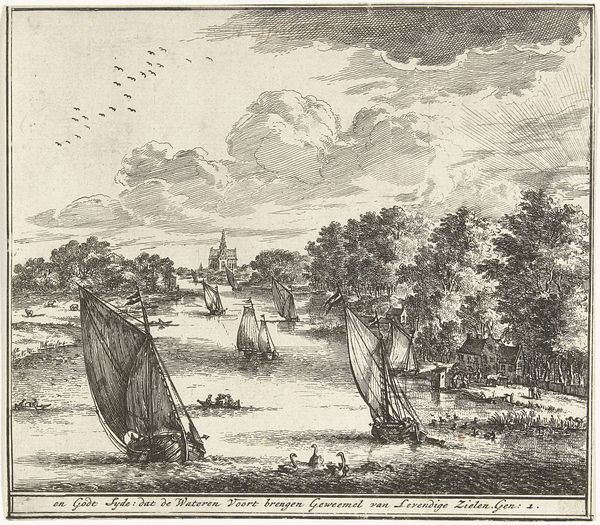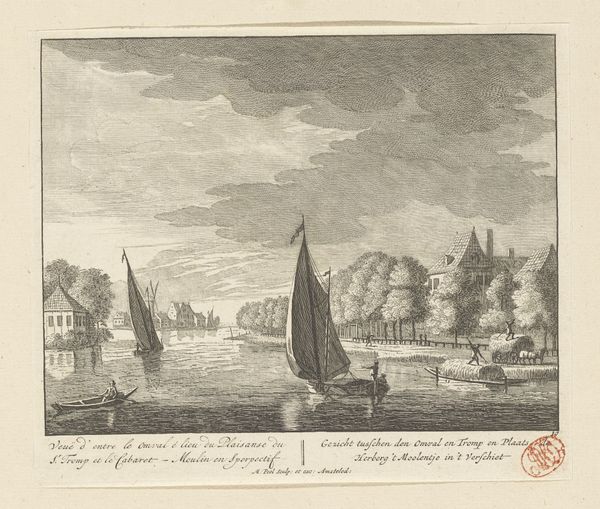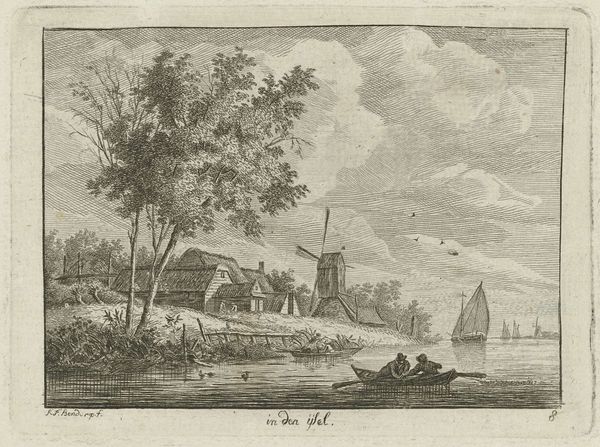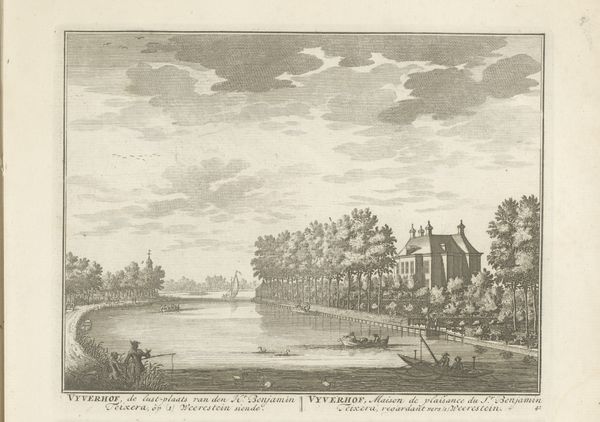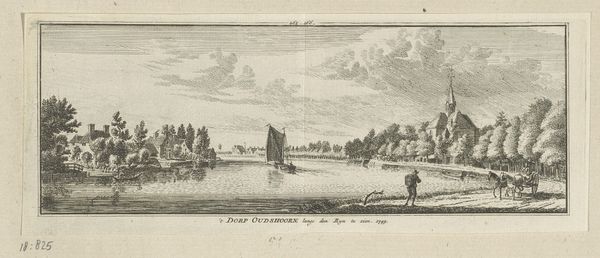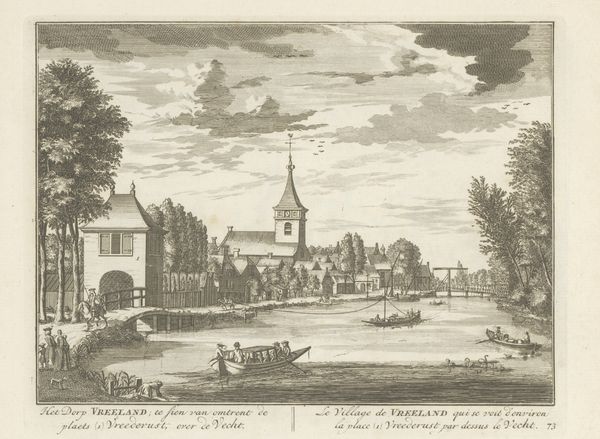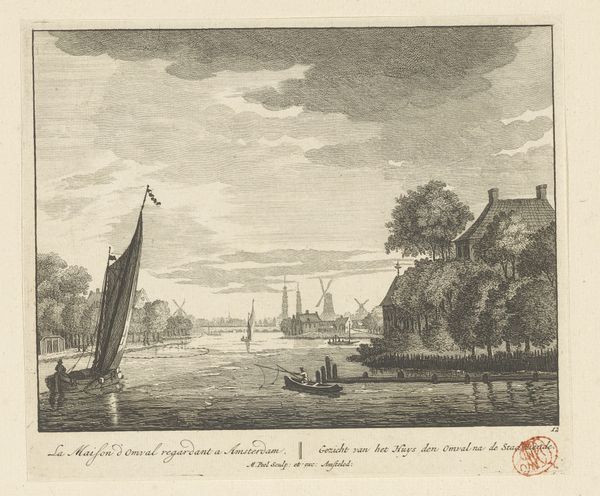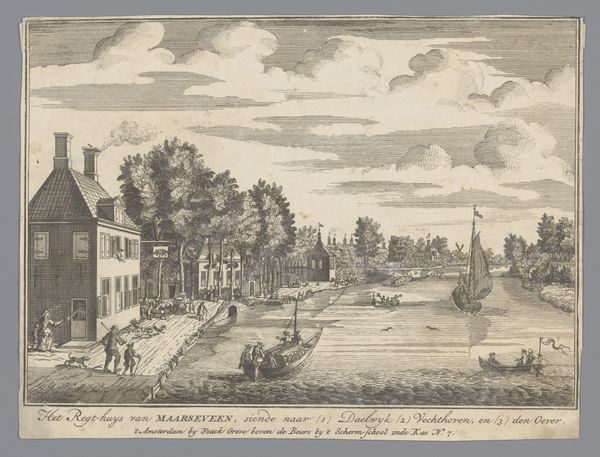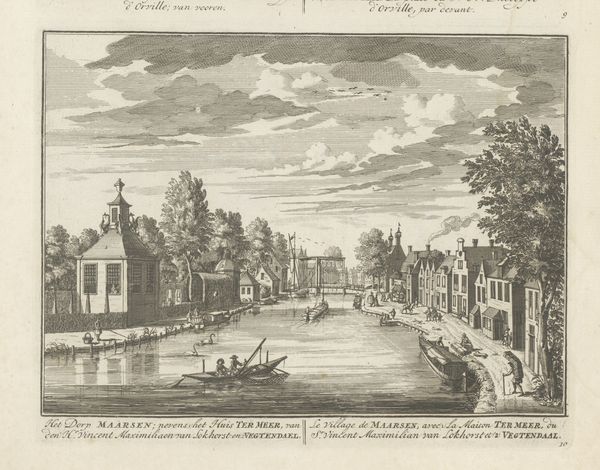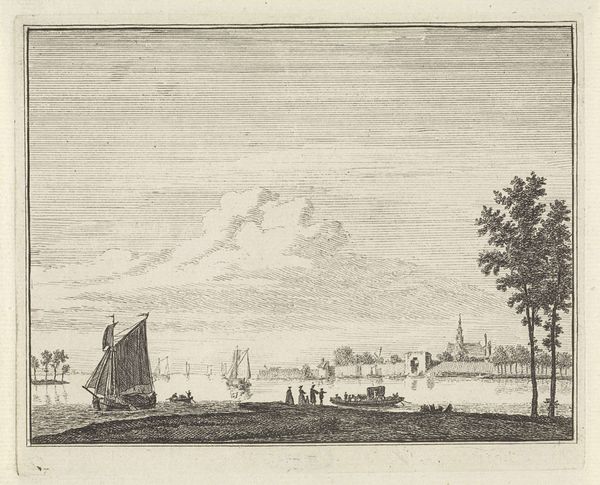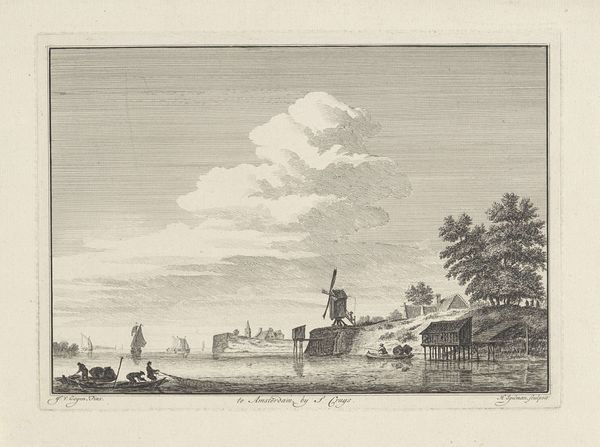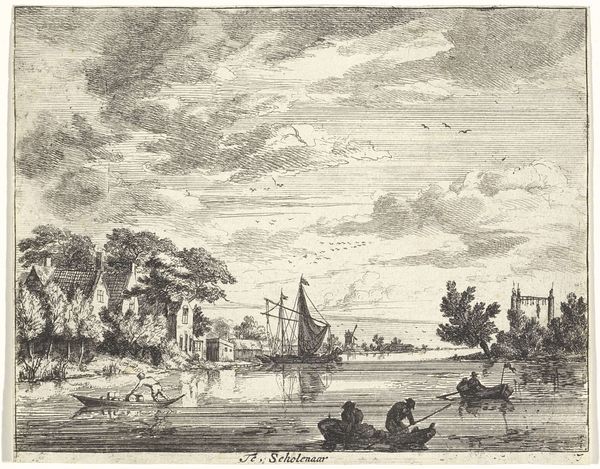
print, etching, engraving
#
dutch-golden-age
# print
#
etching
#
old engraving style
#
landscape
#
cityscape
#
engraving
Dimensions: height 160 mm, width 202 mm
Copyright: Rijks Museum: Open Domain
Curator: The Rijksmuseum is home to a charming 1790 print titled "Gezicht op de buitenplaats Roosendaal aan de Vecht," or "View of the Roosendaal Estate on the Vecht," rendered by Daniël Stopendaal in engraving and etching. Editor: It’s delicate. There's a sense of calm precision in the lines, but also a strange distancing effect. I'm unsure if it stems from its composition and subdued coloring. Curator: Considering its time, that separation likely reveals its intent. Estates like Roosendaal were emblems of societal position. The visual vocabulary here echoes prestige; the estate as an ideal— orderly, abundant, set in harmony with nature. Observe how the estate sits centrally on the horizon, with the river leading towards it, an avenue that conveys power and prosperity. Editor: The symmetry is compelling. But that centralized estate, framed by bodies of water on both sides, feels rigid rather than harmonious. The small figures enacting mundane life -- boating, fishing, strolling -- underscore an artificial construct instead. What cultural values do you imagine the artist wanted to stress, and how may this image have served him and his patrons? Curator: I think the intended values were the ability to master and manipulate both nature and the societal order, to transform untamed wildness into profitable, civilised space. For artist and patron, this scene was, like those figures populating it, an invitation to see themselves occupying this domain, possessing a part in this constructed hierarchy, reinforcing an idealized social order that promised a continuity for generations to come. The sailboats themselves likely carry connotations of commerce. Editor: Interesting! The placement of that prominent sailboat disrupts the river’s flow, but instead guides the gaze upwards towards those orderly clouds, thus tying human commercial aspirations to what many considered nature’s divine intentions. The birds, positioned directly above the building, add a counter-element. Did the people truly think this control was sustainable? It looks brittle. Curator: A fitting conclusion. While such depictions of estate living present an image of dominion and control, viewing it from our contemporary position allows us to question these ideals, offering reflections on social dynamics and the ephemerality of power. Editor: Yes, precisely. This estate, while beautifully rendered, invites one to contemplate what that artificial balance actually represents to the world around it, its long term sustainability, and the values of that time.
Comments
No comments
Be the first to comment and join the conversation on the ultimate creative platform.
